Walls can be made of many different materials, and each material has its own unique characteristics. So, how do you know what kind of walls you have? There are different types of walls, but the most common ones are drywall and plaster.
To determine the surface material, you must know what the material is on the surface and what the structure is on the surface. For example, a two-by-four or wood frame is often used as support in most private homes.
The most common spacing is 16 inches (41 cm), but they can also be 24 inches (6.1 cm) apart in some cases. Sometimes steel studs are used in the construction of private homes and apartments.
As far as size, function, and placement are concerned, these thin-walled steel boxes mimic wooden studs. In heavier constructions, masonry supports are used – bricks, poured concrete, concrete blocks, cinder blocks, or tile blocks.
There is usually a continuous line of support along the entire wall when using this type of support. A wallboard surface is most commonly used in newly constructed homes.
It is a layer of plaster with a paper surface on both sides. The use of paperless boards is becoming more common in newer constructions. Solid plaster may be applied wet over thin wooden horizontal slats or metal mesh in some older homes and large buildings.
Occasionally, paneling may cover the surface of a home, usually plywood. It is not uncommon for very old, cheaper constructions to use cardboard-like materials with deficient strength.
Ways to Know If You Have a Plaster Wall or Drywall Or Something Else
Make sure you use the right hardware and techniques when mounting a TV, adding shelves, or creating a gallery wall, so everything is well-secured and looks good.
The first step in almost any DIY project is determining what type of walls you have. Here are a few ways to tell what type of walls you have. You can tell the type of walls you have by using the following techniques:
1. Check The Attic
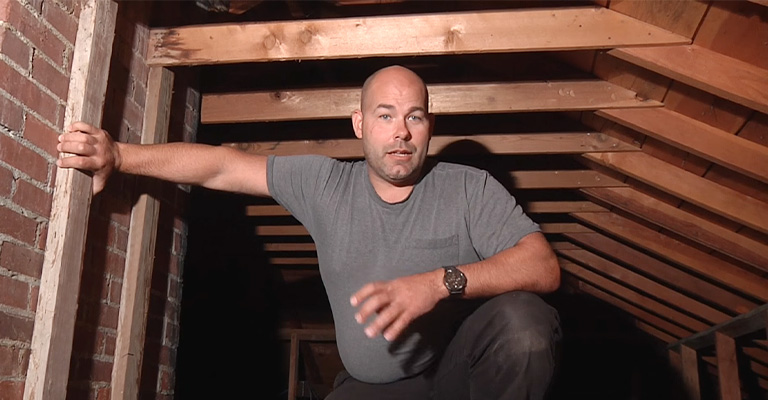
Looking at the walls of an unfinished attic is a great way to learn more about your home.
It’s drywall if you see uniform-looking sheets of material with a paper backing up there. A plaster wall consists of many thin strips of wood separated by hard, white materials.
2. Determine the Age of Your Home
While drywall was invented before WWII, it was not used regularly in residential construction until after the war. Construction of homes with drywall did not become the norm until after 1960.
In addition to this knowledge, you can tell whether your walls are plaster or drywall based on when your home was built. There is a very high chance that the walls of your home were plastered before WWII.
During the 1945 to 1960 era, plaster and drywall were commonly used to build homes. It is likely that the walls of your home were constructed with drywall after 1960.
There is a possibility that parts of the plaster walls were renovated and replaced with drywall by previous homeowners. If you are determining whether your walls are drywall or plaster, you should consider recent renovations.
In an older house, the previous owners may have removed some or all of the original plaster and replaced it with drywall. Sometimes, certain rooms or walls in your home are drywall while others are still plaster.
3. Check Behind Outlets
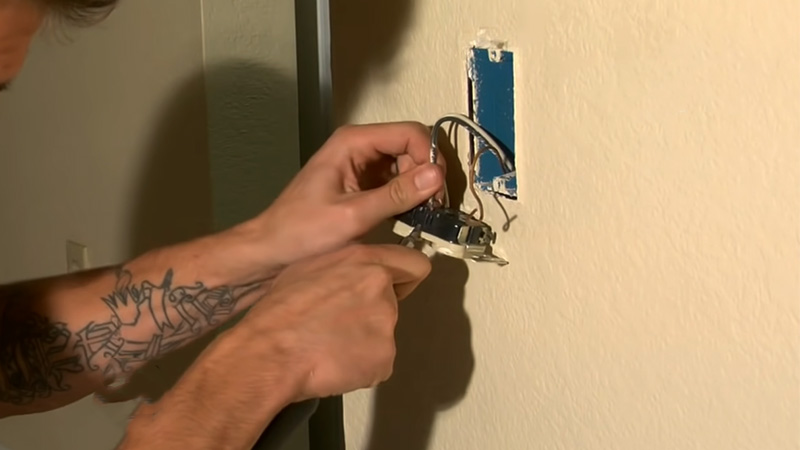
Take a look behind an outlet cover or switch plate on one of your walls, but this one is a little more labor-intensive.
To check if the material at an edge of a switch or receptacle is obvious, carefully remove the cover at the switch or outlet.
The drywall itself may be cut around the opening of an enclosed electric box in a drywalled home. There will be a paper on either side of the chalky gypsum drywall.
It is possible to see showings of lath (thin wood strips covered in hard plaster) on plaster walls and loose wiring. When removing the cover, ensure you turn off the electricity to that outlet (or the whole house if you’re unsure).
A wallboard is a piece of paper that has a plaster interlayer between the front and back. You can tell if a plaster is solid if you see wood strips or metal mesh behind it. Likewise, you have paneling if the material is plywood.
4. The Tack Test
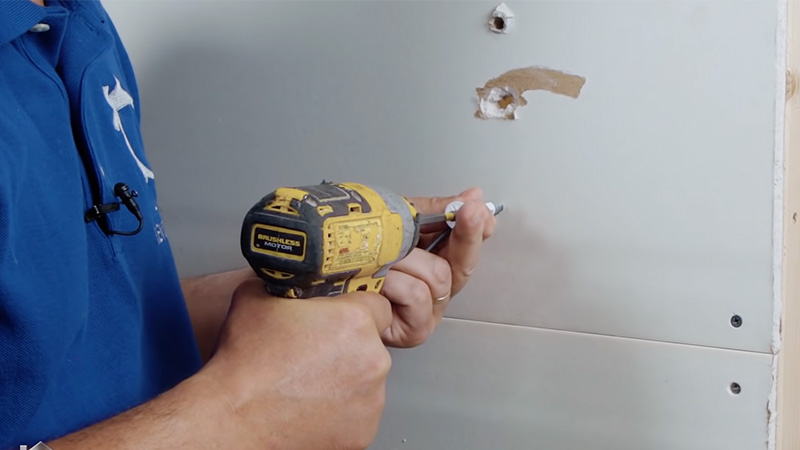
You can hide a push pin by pressing it into a hidden spot on your wall. Is it relatively easy to install? Drywall is likely to be present in your home.
You’re probably dealing with plaster, concrete, or brick if it takes more effort (or doesn’t go in at all).
5. Look For Cracks
Drywall does not develop hairline cracks as it ages, whereas plaster does. Instead, walls, ceilings, and floors are covered with spiderweb-like cracks caused by cracks in plaster.
Any cracks in drywall tend to occur where the joint compound has been used to patch holes or seal seams. Therefore, there will be no cracks in the drywall’s paper surface.
Plaster walls and/or ceilings with spiderweb cracks are a sure sign of plaster damage. Drywall with tiny cracks or flaking is usually the result of a joint compound.
6. Knocking Test
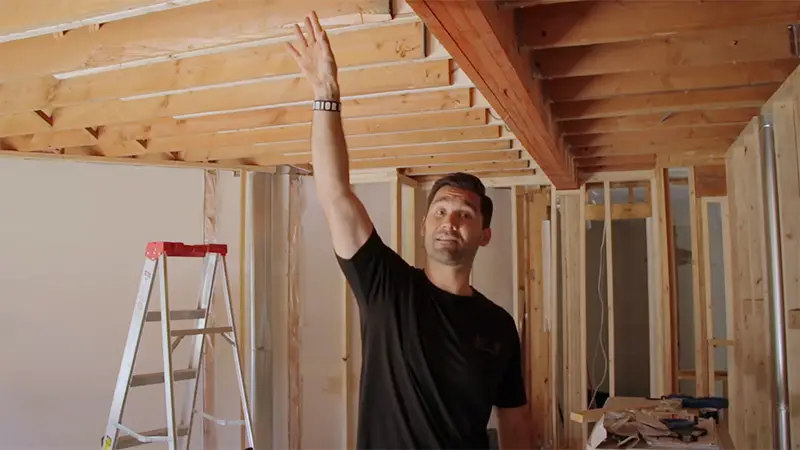
It’s true, really. The way your house is built can be revealed by knocking lightly across the wall. You likely have drywall on your walls if they sound hollow and airy.
You can probably tell if it’s a solid material by its density and fullness, like concrete, brick, or plaster.
It is more common for new construction homes to be constructed with drywall, as opposed to older, more historic structures that are more densely constructed.
7. An Alternate Method
Supporting structures are perhaps more important than the things being hung. For example, the masonry or wood behind an outlet or switch is often challenging to see, but you may be able to see it at a distance.
If you look behind most of the surface material (which will help you hang), you can see hollows that indicate the structure is made of studs.
With an awl or small drill, poke a series of small holes horizontally in an inconspicuous area (please do not use an awl for plaster walls).
Move three to four inches to the side if you hit something solid after going through the surface material. Masonry probably is what you have if it’s still solid.
A hollow structure means studs (wood or steel). Look at the studs to see if they’re wood or steel.
You can probably tell if it’s a wooden frame if you can push the awl or drill deeper into the stud. On the other hand, you probably have a steel stud structure if it seems very firm.
Plasterboard Wall
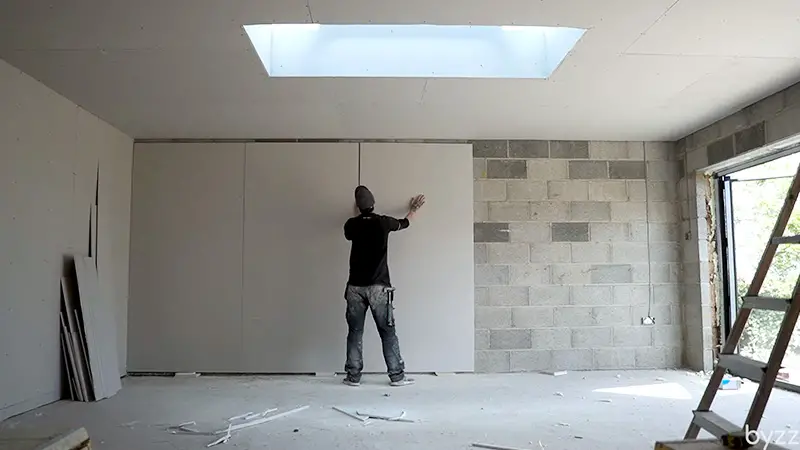
Walls made from plasterboard are typically supported by a framework made of board material. However, because they are almost always internal, non-load-bearing walls, their capacity to support heavy objects is limited.
It is possible to have a pressed steel or timber framework on plasterboard walls. There are usually short horizontals or “noggins” between each vertical stitch between 300 and 600mm.
It is almost always the case that plasterboard walls sound hollow when knocked on and that they flex or move slightly.
Dot and Dab Wall
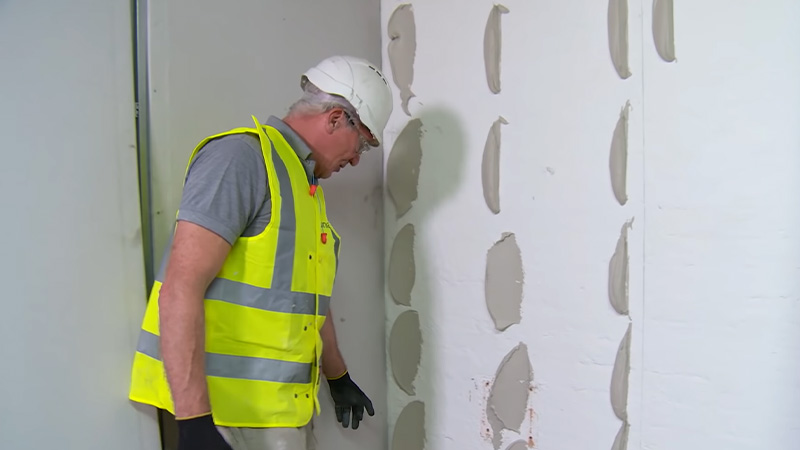
Modern homes are increasingly using dot and dab walls. Solid walls are covered with plasterboard that is adhered with “dabs” of adhesive. Plasterboard fills the void created by this process (usually around 10-20mm in size).
In addition to increased insulation value, this type of wall allows for the easy addition of additional services (such as cabling) at a later date. Because they do not require plastering, they can also be finished more quickly.
However, they can present problems when attaching items to them. For dot and dab walls to be secure, long fixings are required to achieve a solid wall’s strength.
Dot and dab walls: how do you tell? Tapping on the wall and moving your hand around is the easiest method.
There will be hollow spots dotted around the wall and some flex in it, but there will also be hard solid points. A grid pattern of 300-500mm apart places adhesive “dabs” between the plasterboard and the solid wall behind them.
Solid Wall
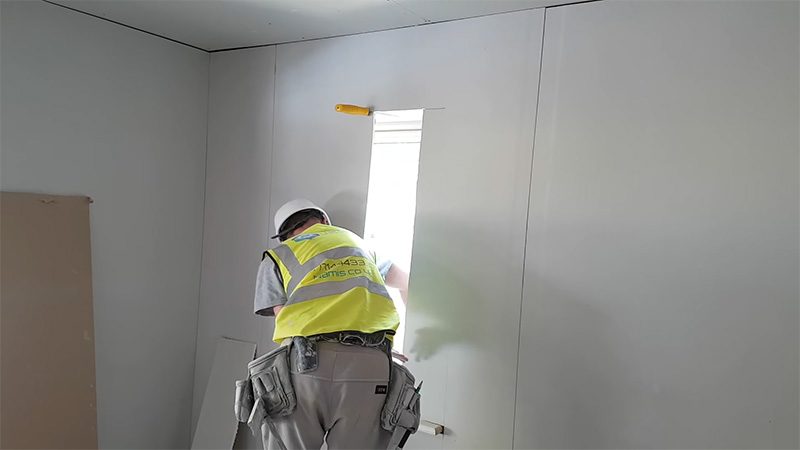
Although solid walls can be constructed from a variety of materials, they are generally considered to be made from bare brick or brick that has been plastered.
Taping on solid walls will not cause them to flex or reveal hollow areas or voids. A solid wall is tough so that tapping won’t reveal any hollow areas or voids.
How Do I Know What Material My Wall Is?
Some experts use a pushpin test to determine what wall they are working on quickly. Put a pushpin on the wall and press it down with your thumb. It’s drywall if the pin pokes easily into the wall. Plaster is if it doesn’t.
What Type Of Wall Do I Have? Is It Drywall Or Solid?
Test it with a pushpin if you still aren’t sure. It’s a foolproof method for finding out what materials make up your wall.
To do this, you only need to take a thumbtack and push it through your walls. You have drywall if the pushpin penetrates the wall.
What Kind Of Walls Are In Old Houses?
Your walls may either be plaster or some kind of original wood paneling if you live in an old house.
Perhaps it’s hidden underneath layers of unfortunate redecorating attempts, but it’s probably there. You shouldn’t rip into plaster further if you’re at the bottom layer.
What’s The Difference Between Plaster And Drywall?
Gypsum, the soft material used in drywall, doesn’t crack easily. The interior of a house is finished with sheets of it nailed to the wood studs.
On the other hand, plaster dries much harder than drywall, and is more labor-intensive and expensive to install.
What Are My Interior Walls Made Of?
Walls are usually covered with drywall, commonly referred to as Sheetrock, which is a proprietary brand name.
Plaster is used instead of drywall in older homes and in high-end new homes. Plaster is both harder and more durable, but it is also more expensive to install.
What Other Material Are Your Walls Made Of?
In the past, lath and plaster have been used for interior walls. Although drywall and plasterboard have largely replaced it; it is sometimes still used for decorative purposes. Wall frames or ceiling joists are framed with horizontal strips of wood called lathes.
Where Can I Find Out What Material My External Walls Are Made Of?
What are the materials used to make my walls? Most of the time, you can tell what the walls are made of by looking at them.
When you bought your house, you should have commissioned a homebuyer’s report or a building survey to find out what type of material your external walls are.
Is My Wall Solid Or Cavity?
Take a tape measure and measure the distance between the outside wall and the inside wall at a door or window.
More than 260mm thick walls are most likely cavity walls. It is probably solid if it is thinner than 260mm. It is still possible to get warm without a cavity wall!
So, What Does My Wall Type Mean?
When you know what type of wall you have, you can make informed decisions about future DIY projects. For example, when hanging art on drywall, you’ll be able to install items such as screws or nails fairly easily.
Despite its lightweight nature, drywall requires wall anchors since the inside of the wall is hollow.
Because plaster walls are so dense, hammering in nails won’t work; instead, use screws to hang artwork instead of nails.
Final Words
Whether hanging pictures, planning a remodel, or repairing your walls, drywall and plaster require different techniques.
The material of your walls is therefore essential to know. Using these simple methods, you can determine whether your home is plastered or drywalled.
Drywall and plaster walls are very different in many ways, which makes them easy to distinguish. The key is to become familiar with each wall type’s appearance, flaws, features, and benefits. You will be able to distinguish them when you feel confident.






